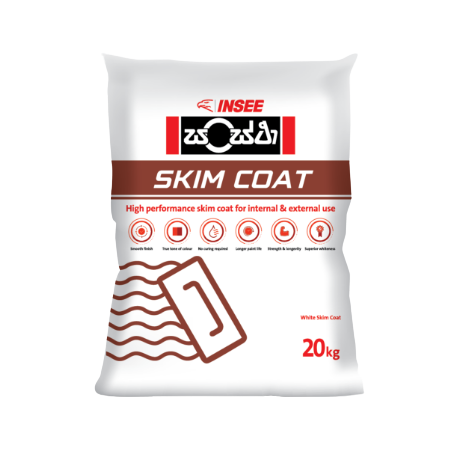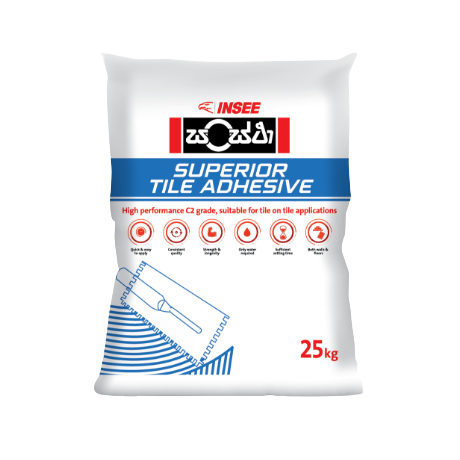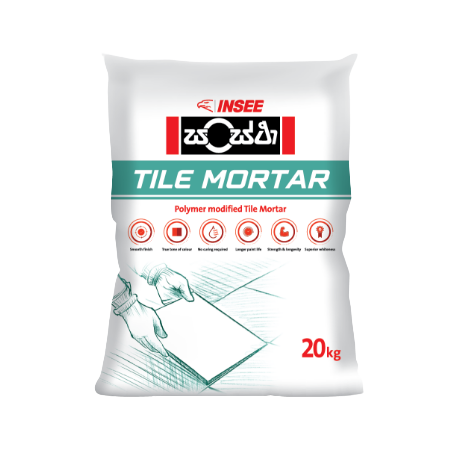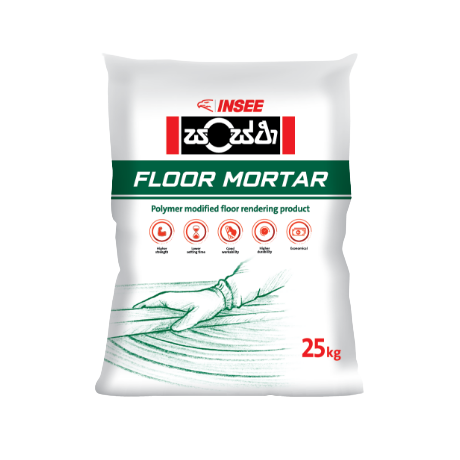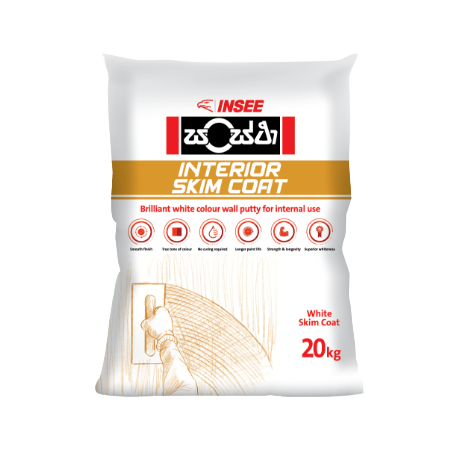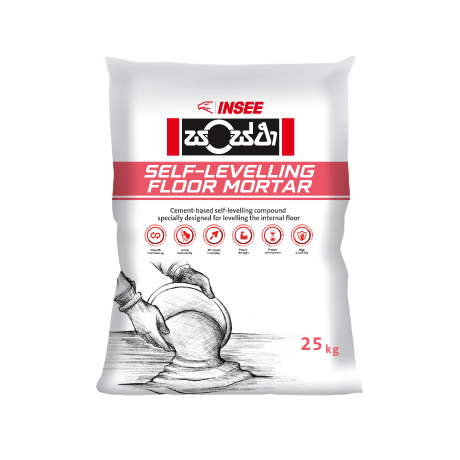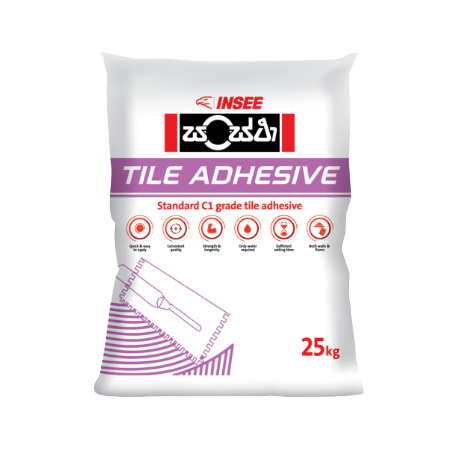
INSEE Tile Adhesive
Cement-based polymer modified adhesive is specially formulated to suit most tiles, including ceramic, porcelain, mosaic, and vitrified tiles, for vertical installation (wall) and horizontal installation (floor).
It is suitable for use over many different surfaces, timber (indoor), fibre cement sheets, and concret.
Physical Properties
- Appearance: Fine granular powder (white or grey)
- Composition: Composed of Portland cement, fine-graded sands, containing re-dispersible binder of copolymer-ethylene vinyl acetate and special additives
- Density: 1.5-1.6 g/cm3-Dry; 1.55-1.65g/cm3-Wet
- Coverage: Up to 400x400mm2, 6-8mm notch: 0.8-1.0M2/Kg/mm
- Over 400x400mm2, 10-12mm notch: 0.5-0.7M2/Kg/mm
- Water Ratio: 25-35% by weight (250-350ml per kg)
- Pot Life: 30min when mixed
- Set Time: 24hrs
- Grouting: 6hrs after vertical installation (wall) and 24hrs after horizontal installation (floor) recommended
- Packaging: 25kg, 3 ply paper sacks
- Shelf-Life: 12 months from the date of production, stored under dry conditions
- Tensile adhesion strength (N/mm2) in compliance with ISO 13007:2010
- Tensile adhesion strength after 28 days 1.4
- Tensile adhesion strength after heat-aging 1.0
- Tensile adhesion strength after water immersion 1.1
- Tensile adhesion strength after freeze/thaw cycles 1.0
- Tensile adhesion strength after 30min open time 0.6
Application Information
- Surface preparation: the responsibility of the Builder, Renovator, or Main Contractor and the applicator with appropriate skills is to make sure that the bases are consistently flat, firmly fixed, and strong and rigid, to support the tile finish.
- Suitable for tiling in the service conditions, to which it will be exposed.
- Ensure surfaces are clean and free of dust, dirt, oil, grease, and other loose materials.
- Ensure surfaces are dry, with no residue or permanent dampness.
- Dry absorbing surfaces should be thoroughly pre-wetted by applying clean water and removing free water before applying the SB500.
- Follow the recommendation of the manufacturer if any pre-treatment of the tile is needed, such as wetting.
Surface Considerations/New Concrete
Thoroughly dry for at least 5 – 6 weeks.
Prior to tiling, remove any concrete sealers or curing compounds from the surface, e.g., resin, wax sealers. Steel trowel finished concrete should be roughened mechanically to remove laitance and to provide a good key for tiling.
New Sand/Cement Screeds
Thoroughly dry for at least 2 - 3 weeks.
Leave the render with a wood float finish to establish a mechanical key.
It should be no less than 12mm in thickness.
Screeds should be pitched to drains where required.
Existing Ceramic Tiles, Concrete/Screed Bases
Existing tiles must be firm and stable.
Roughen the surface by mechanical means and ensure that glaze is sufficiently removed, clean off contamination and dust before installing.
Concrete/Screed bases should be sound and dry. Any unsound areas should be removed, replaced and treated as a new screed or concrete.
Low Strength Brick Work
May require a sand and cement render, recommended cement: sand ratio of minimum 1:4 at thickness <12 mm, reinforced with expanded metal to distribute loading.






